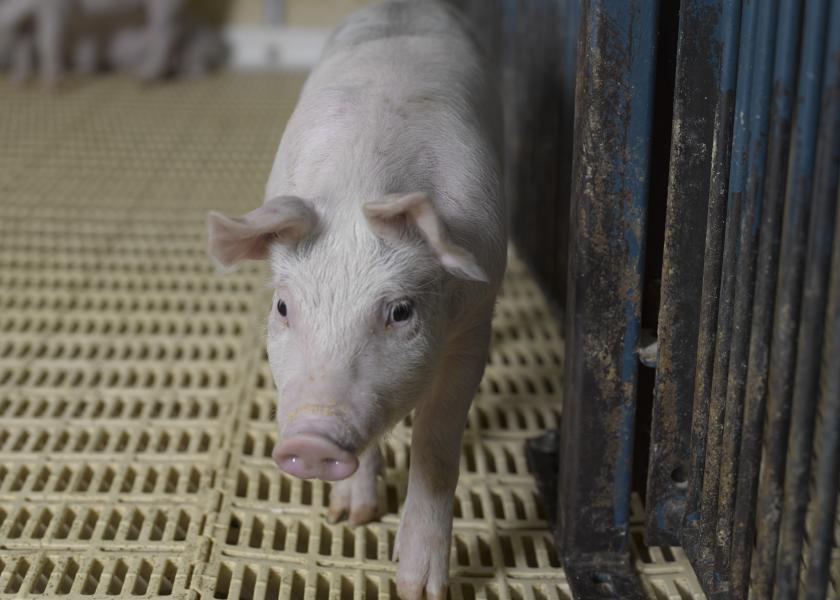PRRS Beyond 2020: The Fight Isn’t Over

Questions remain. Although the knowledge and discovery surrounding porcine respiratory and reproductive syndrome (PRRS) have exploded in the past three decades since the mystery disease first struck U.S. pig farms, the industry is still fine-tuning protocols.
“I’m not sure there is a one-size-fits-all answer to these questions,” says Daniel Linhares, DVM and assistant professor in the College of Veterinary Medicine at Iowa State University.
The increasing role of big data
He believes big data and precision agriculture will be critical in the years ahead as producers make decisions about how to invest their money into herd health.
“In the long term, how do I maximize my return on investment and make the right decisions most of the time?” Linhares says. “It’s got to be more than a coin flip; you’ve got to be right most of the time on those decisions. We are dedicating studies to help people measure the impact of PRRS for a particular farm at a particular time by investing in diagnostic technologies and in monitoring technologies with production data.”
His research team is also measuring the effects of vaccines and other interventions with slightly similar yet slightly different farm backgrounds so they can help people fine-tune their decision tree.
“We are digging into questions from, ‘When should I vaccinate?’ to ‘What is the proper protocol?’ to “When do I just sit back and do nothing?’” Linhares says. “These are the type of questions we get a lot and are the areas of study for most of our graduate students today.”
More research is shifting to population-based studies and less focus on animal-based studies as the industry seeks to understand how PRRS behaves at the population level.
New areas of research growth
From an applied point of view, Montserrat Torremorell, DVM and associate professor in the Department of Veterinary Population Medicine at the University of Minnesota, believes it is time to shift some research focus to grow-finish pigs.
“How do we continue to manage PRRS in the grow-finish barn?” she asks. “That’s a weakness we have in the system.”
Another area of opportunity is looking at the spread of the PRRS virus by feed, says Scott Dee, DVM, Director of Research for Pipestone Veterinary Services.
“We’re looking at new ways a virus can get into a filtered farm,” Dee says. “Filtered farms are basically bulletproof – they’ve got all the best biosecurity from mechanical introduction, people, supplies, trucks, negative pigs, semen and air filters, but we still – 10% of the time – see infections in filtered farms and we can’t figure out why that is.”
Dee believes the virus may be getting in through feed, although he doesn’t think it’s a significant percentage, more of a “nagging” issue. However, he has growing experimental evidence to support this as a risk factor to consider.
“The good news is as we do our mitigation trials (studying feed additives that reduce virus survival) every mitigant we’ve tested so far just annihilates PRRS,” Dee says. “It’s not a high-risk issue, but for the farms that are really at the top and continue to have a nagging outbreak here and there, it might be something to consider.”
The power of technology
New technologies are also being directed at creating PRRS-resistant pigs and more tolerant genetic lines.
“From the research and development side, we continue to evaluate new technologies – next-generation immunity management tools – and will continue to do that relative to PRRS and other pathogens.”
Researchers are diligently working with innovative technology to improve what we currently have.
“What we have is effective now to fight PRRS,” says Reid Philips, DVM and PRRS technical manager for Boehringer Ingelheim. “By applying the knowledge, tools and processes we have today in a holistic and systematic approach, we can make significant progress controlling the PRRS virus.”
It takes a village
When Philips looks back at the history of PRRS, he admits it’s been challenging and has required a steep learning curve. But he notes it wouldn’t have been possible without a village approach.
“It has taken everyone coming together to get to where we are today,” he says. “Listening to the swine producers and veterinarians out there facing the fire, seeking answers and field-applicable solutions to their questions and collaboratively generating knowledge they can apply on their farms to improve their ability to control the virus,” Philips says.
Can the industry get better? Absolutely, he says.
“We can always get better. It’s a spot in the road that should be a goal and objective for all of us. We have good tools and protocols and if we maintain discipline as an industry, we can continue to move the needle relative to controlling the virus and make it less impactful than it has been,” Philips says.
Don’t sit around and wait for these other things to happen before implementing a PRRS control plan. Do what you can today based on the knowledge available now, Dee says. A strategic combination of measures to prevent, detect and manage PRRSV infection works, Linhares adds.
“No one has to be defeated by this thing – there’s enough information and tools out there that if people want to, they can live with PRRS,” Dee says. “Or they can actually eliminate it and stay free of it. We can beat it.”
This is the third story of a three-part series on PRRS.
Read the entire series by Farm Journal's PORK:







